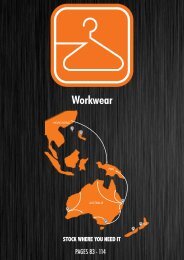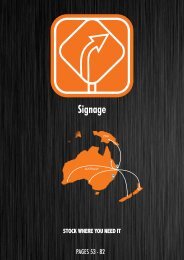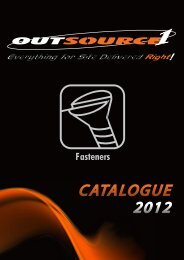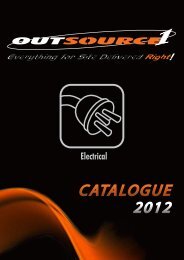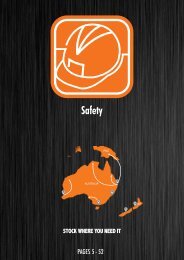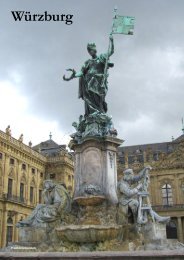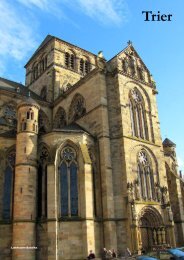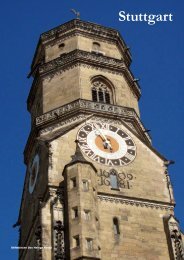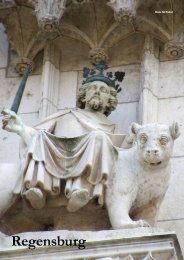Raven Guides: Germany - Nuremberg
You also want an ePaper? Increase the reach of your titles
YUMPU automatically turns print PDFs into web optimized ePapers that Google loves.
The preserved<br />
medieval features<br />
of the Hohenstaufen<br />
Kaiserburg (Apr-<br />
Sep M-Su 9-18,<br />
Oct-Mar M-Su<br />
10-16, museum<br />
€7/6 with tower<br />
view, visitors<br />
under 18 admitted<br />
free) are due to the<br />
crown’s loss of<br />
interest in the<br />
city after the<br />
Reformation. The<br />
earliest of the<br />
present structures<br />
is the Kapelle<br />
(c 1200), of which<br />
there are lower and<br />
upper sections, the<br />
latter with an imperial gallery and limewood crucifix by Veit Stoß. The Kaisersaal, used<br />
for receptions, and the Rittersaal, for assemblies of the Reichstag, are on different levels.<br />
The Heidenturm is also from this period, along with the footings of the mighty round<br />
Sinwellturm, but the Sinwellturm’s present upper tower is (along with the nearby well<br />
house) from the 16th century. The tower is the place to survey the layout of the<br />
fortifications as well as take in the city view. The Burggrafenburg was in the lower area<br />
next to the present access ramp but is much reduced by the destruction of 1420. Take tram<br />
4 to Tiergärtnertorplatz or bus 36 to Burgstraße.<br />
After the castle passed into the control of the city<br />
the moat that separated the two was no longer<br />
needed. It was filled in and the Kaiserstallung<br />
(1495) by Hans Beheim was built as a corn<br />
storehouse on the site between the earlier eastern<br />
watchtower Luginsland (1377, part of the town’s<br />
defences) and the pentagonal tower (of early but<br />
uncertain date). In the 16th century it began to be<br />
used as stables, but today it is the DJH hostel. The<br />
towers were used as prisons from the 15th century.<br />
Beheim proved himself master of techniques for<br />
buildings that were large for the time, including<br />
the Heilig-Geist-Spital and Mauthalle. Take tram 4<br />
to Tiergärtnertorplatz or bus 36 to Burgstraße.<br />
The half-timbered buildings of<br />
Weißgerbergasse leading to the<br />
Weinmarkt give the best impression<br />
of a complete half-timbered street.<br />
More than 20 preserved buildings<br />
toward the west end are artisan<br />
homes, as opposed to those of the<br />
commercial classes. To judge from<br />
the street name tanneries were the<br />
dominant businesses, probably those<br />
producing fine leather. The buildings<br />
range from the 15th to 17th centuries,<br />
providing a mixture of features. Take<br />
bus 36 to Am Hallertor.<br />
The Albrecht-Dürer-Haus at Albrecht-Dürer-<br />
Straße 39 near the castle stands as a memorial to<br />
the figure most identified with the northern<br />
Renaissance. Born to an immigrant Hungarian<br />
goldsmith, Dürer went on to study painting and<br />
engraving as an apprentice and set up his own<br />
workshop by 1494. He travelled several times but<br />
bought this c1450 Gothic house in his home town<br />
in 1509 and lived there until his death in 1528. The<br />
building, close to original appearance but<br />
refurnished, houses the Dürer museum including<br />
displays of the master’s work spaces (see<br />
Museums). His statue is nearby at Albrecht-Dürer-<br />
Platz. Take bus 36 to Weintraubengasse.<br />
Hauptmarkt 18. During the Christmas markets,<br />
November 29 to December 23, the Hauptmarkt<br />
office is open M-Sa 9-19, Su 10-19. Nürnberg<br />
Info is at Königstraße 93 and Hauptmarkt 18.<br />
During Christmas markets, November 29 to<br />
December 23, the Hauptmarkt office is open<br />
M-Sa 9-19, Su 10-19. At Königstraße the<br />
attached Kulturinformation Nürnberg centre<br />
has information about culture and events.<br />
The tourist information website is tourismus.<br />
nuernberg.de.<br />
For walking around the sights, Nürnberg<br />
City Guide (€5) from Schöning Verlag has all<br />
the background. <strong>Nuremberg</strong>: The medieval<br />
city – a short guide (€6.80) by Martin Schieber<br />
brings excellent insights into the history<br />
behind the sights. The <strong>Nuremberg</strong> Trials: A<br />
short guide (€6.80) backgrounds the post-<br />
World War II war crimes prosecutions.<br />
For literature in English or maps and<br />
guidebooks, Hugendubel is at Ludwigsplatz 1.<br />
Freytag & Berndt (M-Sa 10-18) at Königstraße<br />
85 specialises in maps and travel guides of<br />
diverse types. Korn & Berg (M-F 9.30-18.30,<br />
Sa 9.30-18) at Hauptmarkt 9 has guidebooks<br />
and maps including city maps. For literature<br />
on arts and culture a Cedon shop is in the<br />
Germanisches Nationalmuseum.<br />
Transport<br />
Rail: The Deutsche Bahn Reisezentrum at<br />
the Hauptbahnhof (M-F 6-21, Sa 8-18, Su 10-<br />
21) handles ticket sales but there is a separate<br />
information desk (M-Su 6-24) for other<br />
inquiries. The only toilets in the vicinity open<br />
during daylight are in the Königstorpassage,<br />
north of the station under Bahnhofsplatz.<br />
Multiple daily rail services, including fast<br />
trains, run from Würzburg (about 55 minutes)<br />
and Frankfurt (two hours 10 minutes).<br />
Hourly expresses arrive from Regensburg<br />
(about one hour) with links to Passau as well<br />
as regional trains (also hourly). Fast expresses<br />
to and from Munich (70 to 75 minutes) are<br />
regular daily, sometimes travelled at 300km/h.<br />
Fast expresses also arrive from Leipzig and<br />
Berlin several times daily.<br />
DB regional trains also serve Amberg daily<br />
(about 50 minutes) at intervals varying from 40<br />
to 70 minutes. Rothenburg ob der Tauber can<br />
be reached by using three trains and changing<br />
at Neustadt an der Aisch and Steinach.<br />
Expresses to and from to Vienna/Wien<br />
(four hours 45 minutes) via Linz run four<br />
times daily, as well as trains with a few more<br />
stops. A true overnight journey to Vienna is<br />
not available, although a nightly EuroNight<br />
train leaves <strong>Nuremberg</strong> just after 3.20 to arrive<br />
in Vienna just before 9.00. There are several<br />
daily direct rail services to and from Prague/<br />
Prag (three hours 40 minutes) by DB’s IC Bus<br />
or the Czech Student Agency Bus.<br />
Bus: Long-distance buses use the central<br />
bus station (ZOB) adjoining Bahnhofstraße at<br />
Käte-Strobel-Straße east of the Hauptbahnhof.<br />
Overnight Eurolines buses to London leave<br />
three times a week (M, W & F 21.15). Overnight<br />
buses to Paris leave three times a week<br />
and to Prague 25 times a week. The Eurolines<br />
ticket office is adjacent to the stops. Buses to<br />
eastern European and Balkan countries are<br />
many.<br />
Services to other German cities include<br />
the daily Berlin Linien Bus services to and<br />
from Munich (two hours 20 minutes) and the<br />
FlixBus services to Berlin, Munich, Frankfurt<br />
and Stuttgart. The Eurolines-Touring Munich<br />
RAVEN TRAVEL GUIDES GERMANY - <strong>Nuremberg</strong> 3






